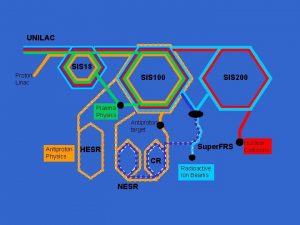SIS 18 Status Operation The SIS is running




- Slides: 4

SIS 18 Status: Operation § The SIS is running without major problems § Despite the heavy rains “only” slightly wet rugs in the kicker room. It is further closely monitored my the responsible persons. GSI Helmholtzzentrum für Schwerionenforschung Gmb. H

SIS 18: Shutdown § Spillcavity: Will be installed late in shutdown. Resources are beeing sorted out. § Various safety related repairs are done during shutown. § Remaining GAF work will be done. GSI Helmholtzzentrum für Schwerionenforschung Gmb. H

SIS 18 Proton Operation at high energy § The method to accelerate Protons beyond transition is implemented in the control system. Fast extraction of 4 Ge. V or 4. 5 Ge. V Protons should just work with the proper setup. § Slow extraction has been shown up to 3 Ge. V (maybe 3. 1 Ge. V, was a FRS experiment). § We have an option to switch the transition point back on flattop. We have to make sure, that the beam is de-bunched before. Is being prepared (probably done now). Untested! § Both, slow extraction with the shifted transition point or shifting back to the nominal optics on flattop, might work but has never been tested. § In general the maximum deflection angle of the E-Septum is too low at high reigidities so the extraction losses are expected to be high. GSI Helmholtzzentrum für Schwerionenforschung Gmb. H

SIS 18 operation with <11. 4 Me. V/u injection energy § Situation is unchanged since the last times we had that, works! § SIS can operate with A 3 energy (was even shown with lower injection energy recently, A 2 B). § The matching and beam quality is a little worse -> somewhat reduced intensity, see last beamtimes under this circumstances. § We need both h=2 and h=4 cavities to go to full energy (at least one each). § Otherwise we inject with h=5 (or even H=6 if the energy gets lower) and are limited in maximum energy to about 500 Me. V/u for H=5. GSI Helmholtzzentrum für Schwerionenforschung Gmb. H







